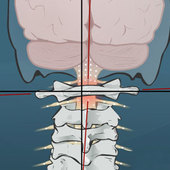Why do I feel pain when I haven’t had an accident or an injury?
Many people, health care practitioners included, believe that pain and injuries are synonymous: where there is pain, there must be an injury, and if there is no is pain, then there is nothing to worry about.
This way of thinking can be very detrimental to pain management, long-term healing and the recovery from chronic pain, and it can also cause a great deal of frustration to someone experiencing pain but continually being told that nothing is ‘wrong’.
Pain Demystified
It is important to realize that pain is an output from the brain, rather than an input to the brain. Older pain models conceptualize that injuries or diseased tissue send pain signals into the spinal cord or brain, and that is why things ‘hurt’. This is absolutely incorrect! To better understand this, let me share an analogy:
Let’s say that you just sprained your ankle while running—I think everyone would agree that it hurts! This is a great example of an injury that is directly associated with instant pain. Now let’s say you sprain your ankle, but it happens right when you are crossing a busy street. At the same time, out of the corner of your eye you see a speeding bus coming straight towards you. Would your ankle still hurt? You can bet it won’t!
In this scenario, it doesn’t make sense for your brain to let you feel that pain because you would then be unable to deal with a much larger problem—the speeding bus.
The perception of pain is in fact your brain’s way of interpreting danger or threats around you and executing the appropriate action to prevent either your extinction or the occurrence of a more damaging injury. This is why you may scrape your leg on a sharp thorn while hiking but not notice until you get back to your car and see the blood running down your leg! Your brain decided that the threat was insignificant enough for you to perceive the pain when you were able to deal with it properly.
Why am I in pain?
Many people suffering from undiagnosed pain claim that they have no tissue issues or have never had an injury, and all testing they have done comes back negative. This can be frustrating because if this is the case, then why does it hurt so much?Tissue does NOT have to be injured for pain to be experienced; the brain evaluates all threats including stress, anxiety, or tissue injury and then chooses to defend the body by producing pain. We sometimes hear of people just randomly developing pain without an accident or injury, not realizing that pain can actually develop due to emotional overload or stress.
So, if you get told that it’s all in your head, that is actually true! This doesn’t make the pain any less real, and finding the cause of the stress can be the key to relieving the perception of pain.
Why a NUCCA chiropractor should be part of your pain management team
Although we wouldn’t go so far as to call our chiropractic clinic a “pain clinic in Calgary”, it does go without saying that we help people in pain. We do this by balancing posture and enabling people to live with more ease relative to gravity. Gravity is a stressor that can contribute to tissue damage when your body responds to it in an unbalanced state. Over time, your body’s continual postural compensation can manifest as pain or other conditions. Rebalancing your body so that it experiences gravity in an aligned position can relieve some of the mechanical stress, which gives your body more resilience to manage other stressors in the body.
Take better control of your health!
If you are concerned about unexplained pain, the practitioners at the Vital Posture™ Clinic are here to help you understand your situation and create a plan for better pain management.
We will support you and help you get your life back.




